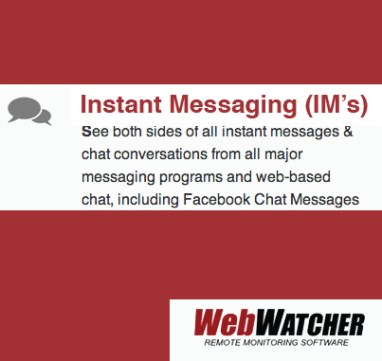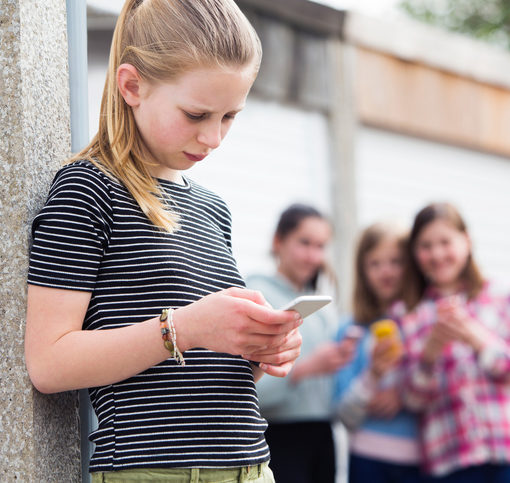The internet has connected and opened up the world in a number of surprising ways. And often, that’s a good thing. But for parents, the internet can seem even more frightening and dangerous to their children than the outside world.
After all, the internet never turns off, it follows you into your home, and your child is probably carrying a connection to it in their pocket. Plus, kids often know more about the internet than their parents, or at least spend their time in different parts of the internet that their parents may not be familiar with.
That can be scary when you know that there are dangers online that your child may not yet understand the ramifications of. But there are ways to protect your child. Parental monitoring software can help. Take a look at five of the biggest online dangers that parental monitoring software can help to protect you from.
1. Cyberbullying
Cyberbullies are one of the more well-known dangers online, but knowing about them doesn’t necessarily make them easier to avoid. Often, teenagers are cyber bullied by people that they already know from school or other activities. Bullies have always been something that children and teenagers have had to learn to deal with, the internet just gives them another method by which they can target their victims.
On the other, hand, in some ways cyberbullying is even more dangerous and difficult to deal with than traditional bullying. Cyberbullies can reach their victims anywhere, even in places where their targets are supposed to feel safest, like their own homes. Rumors and gossip can spread faster and farther on the internet than they can within the walls of a school, and an unflattering image or video that manages to go viral can be tied to a person’s name – and reputation – indefinitely.
And while cyberbullies may not be able to reach through the screen to cause physical damage, it would be inaccurate to say that no physical damage can come from cyberbullying – instances of self-harm and suicide attempts have been linked to cyberbullying.
Parental controls can help give parents the information that they need to intervene before cyberbullying becomes serious. You’ll also have the tools you need to block and report cyberbullies on various platforms and limit their ability to target your child.
2. Sexting
Some of the danger kids face online stem from their own actions. Sexting – or sending sexually explicit texts – is something that often seems harmless in the moment to a teenager. Often, sexually explicit texts are meant to be viewed only by the romantic partner of the person who sent the message. But that doesn’t mean that will be the only person who sees a text.
Teens who receive sexually explicit texts sometimes share them with friends or even post them on the internet, which can be damaging to the person whose image is shared without their consent. Having the ability to monitor your child’s text messages can help you prevent them from making the mistake of sending a message that could cause problems for them in the future.
3. Stalking
Mobile internet-connected devices make it easy to connect with friends and family. But sometimes, they also facilitate connections between stalkers and victims. Your child’s smartphone, or apps that they use, may be giving away their location or travel patterns to people who shouldn’t have that information. If your teen is too easy to find, they’re at risk of being stalked.
Parental controls allow you to monitor your child’s location settings. You can lock them down to ensure privacy and prevent people who shouldn’t know where your child is from finding them. You’ll also be able to see what your child is posting and monitor whether they’re being safe or whether they’re revealing too much information.
4. Internet Addiction
Overuse of the internet is associated with some real problems, including difficulty focusing in school, lack of sleep, depression and anxiety, and eye strain, among other things. Children and teens need firm limits on their device usage in order to learn how to use their computers, tablets, and phones responsibly.
However, it can be difficult for parents to enforce common-sense boundaries on device usage. Children may stay up late or use devices when their parents are at work, for example.
Parental monitoring software helps you keep an eye not just on what your kids are doing, but also how much of it they’re doing. You’ll be able to see if they’re overusing their devices or accessing them during times when they’re not supposed to, like after bedtime or during class time.
You can set the devices to turn off after certain hours or block non-educational sites during certain times – whatever works to enforce the boundaries that you set for your child.
5. Dangerous or Inappropriate Apps

It’s impossible for parents to know ahead of time every app that their child might want to download. There are new ones coming out all of the time. That means that you don’t necessarily know which apps might be dangerous or inappropriate for your child.
The name or logo of the app doesn’t necessarily tell you what it’s about – and there are ways for users to hide apps on their phone that they don’t want visible in a casual search – so just picking up your child’s phone and looking at it may not be enough to let you know if your teen has downloaded an app you wouldn’t want them to use, like a dating app or a gambling app.
With parental control software, you’ll be able to see all of the apps that your child downloads, whether or not they try to hide them. You can even set it up so that your child can’t download apps that you haven’t given your permission for. At a minimum, you’ll be able to research the apps that your child downloads so that you know if you’re comfortable with them using those apps.
Parenting in the internet age can be difficult, but parental control software is a tool that can help make your job easier. To find out more about how parental control software can work for your family, get our risk free trial





